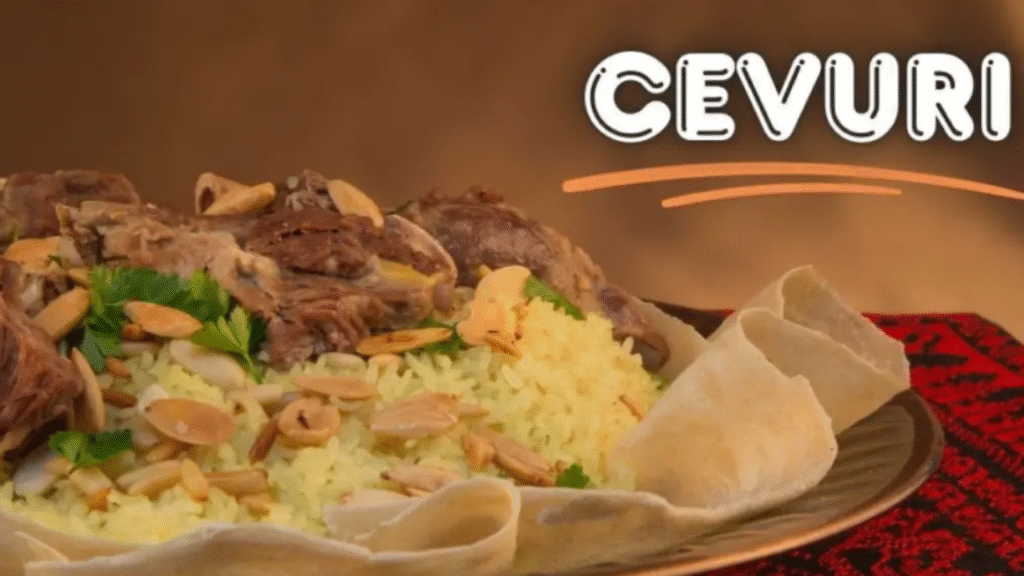There’s something magical about dishes passed down through generations. They carry the essence of heritage, memories, and a unique cultural identity. Cevuri, a beloved Eastern European stew, is one such dish. Known for its rich flavors and rustic heartiness, it’s a recipe that invites patience and rewards deeply. Whether you’ve grown up simmering on your grandmother’s stove or are discovering it for the first time, this guide will walk you through every step of the process—from its roots to your bowl.
What Is Cevuri?
Cevuri is a slow-cooked stew, deeply rooted in the traditional kitchens of Moldova and northern Romania, particularly in regions like Bucovina. It often features pork or lamb simmered with a variety of vegetables such as bell peppers, carrots, onions, tomatoes, and potatoes. What sets Cevuri apart from other stews is its liberal use of sweet paprika, aromatic herbs like dill or lovage, and its reliance on reduction rather than flour for thickening.
This dish embodies comfort. It was historically made using what was available—seasonal vegetables, home-raised meat, and pantry staples. Over time, the recipe has evolved, but the soul of Cevuri remains unchanged: simple ingredients, treated with care, and simmered slowly to develop deep, hearty flavors.
Ingredients and Tools You’ll Need
Essential Ingredients
- Meat: Pork shoulder or lamb shoulder (1.5 – 2 lbs), cubed
- Vegetables: Onions, bell peppers, carrots, tomatoes, potatoes (optional), green beans (optional)
- Aromatics & Herbs: Garlic, sweet paprika, tomato paste, bay leaves, thyme, dill or lovage
- Liquids: Vegetable or chicken stock (2–3 cups), vinegar or lemon juice (1–2 tablespoons)
- Cooking Fat: Vegetable oil or lard for browning
- Salt & Pepper: To taste
- Traditional Accompaniments: Sour cream (or smetana) and crusty bread or polenta
Kitchen Tools
- Dutch oven (5.5 – 7 quart) or heavy-bottomed pot
- Chef’s knife and cutting board
- Wooden spoon, ladle, tongs
- Measuring cups and spoons
Step-by-Step: Traditional Pork Cevuri Recipe
Prep Time: 30 minutes
Cook Time: 1.5 – 2 hours
Total Time: 2 – 2.5 hours
Servings: 4–6
Instructions:
- Brown the Meat: Pat pork dry, season with salt and pepper, and brown in batches in a Dutch oven using oil. Remove and set aside.
- Sauté the Aromatics: Add chopped onions to the same pot and cook until translucent. Add sliced carrots and continue cooking.
- Bloom the Paprika: Push veggies aside, add garlic and tomato paste, then paprika. Stir constantly for 30 seconds—this blooming step is essential to flavor-rich Cevuri.
- Deglaze the Pot: Add vinegar or lemon juice to lift the flavorful bits stuck to the bottom.
- Combine Ingredients: Return meat to the pot, add chopped peppers, tomatoes, potatoes (if using), herbs, and stock. Bring to a gentle simmer.
- Simmer Slowly: Cover partially and cook for 1 hour. Stir occasionally and add more stock if needed.
- Final Simmer: Add green beans (if using) and simmer 30–45 more minutes until the meat is fork-tender.
- Finish the Dish: Stir in dill or lovage. Let rest 15–20 minutes before serving.
- Serve: Ladle into bowls, top with sour cream, and serve with crusty bread.
This traditional version of Cevuri is deeply satisfying and showcases how careful technique transforms humble ingredients into something extraordinary.
Delicious Cevuri Variations
One of the beauties of how versatile it is:
- Lamb Cevuri: Swap pork for lamb shoulder. Add rosemary for a woodsy note.
- Vegetarian Cevuri: Use mushrooms, eggplant, and beans. Add soy sauce for umami depth and increase the vegetable stock.
- Chicken Cevuri: Use boneless chicken thighs and reduce simmering time. Finish with fresh tarragon.
- Spicy Cevuri: Add chili peppers or cayenne for a kick.
- Summer Garden Cevuri: Include fresh summer vegetables like zucchini and spinach.
- Slow Cooker Cevuri: Follow steps through deglazing, then transfer to slow cooker. Cook on low for 6–8 hours.
- Instant Pot Cevuri: Use the Sauté function to prep, then pressure cook for 15 minutes with natural release.
Each variation retains the spirit of Cevuri while allowing you to adapt it to your tastes or dietary preferences.
Tips for the Best Cevuri
To take your Cevuri to the next level, follow these expert tips:
- Sear thoroughly: Proper browning adds depth—don’t rush it.
- Bloom your spices: Cook paprika in oil briefly to unlock its full aroma.
- Simmer gently: Keep the heat low for tender meat and melded flavors.
- Season in layers: Salt early, taste often, and finish boldly.
- Use fresh herbs at the end: This keeps them fragrant and bright.
- Add acid: Vinegar or lemon balances richness.
- Rest before serving: Let the stew sit to deepen its flavor.
- Skim extra fat: Remove excess surface fat if needed.
- Cut vegetables properly: Uniform pieces ensure even cooking.
- Add sour cream at the table: It enhances flavor and texture beautifully.
How to Serve Cevuri
To enjoy Cevuri in the most traditional way, serve it in wide, deep bowls. Add a generous swirl of sour cream and a chunk of crusty bread. For a more authentic twist, try it over soft polenta.
Great Pairings:
- Salads: Cucumber salad or green salad with vinegar dressing
- Pickles: Pickled peppers, cucumbers, or green tomatoes
- Drinks: Medium-bodied reds (like Pinot Noir), dry white wines, or Czech Pilsners
Storage and Leftovers
This stew is one of those dishes that tastes even better the next day.
- Refrigeration: Store in airtight containers for 3–4 days.
- Freezing: Freeze in portions for up to 3 months.
- Reheating: Use low heat on the stovetop or medium power in the microwave.
Leftover Ideas:
- Cevuri Hash: Sauté leftovers with onions and top with a fried egg.
- Stuffed Peppers: Use as filling with cheese and bake.
- Savory Pies: Use as a rich filling in pot pies.
- Pasta Sauce: Thin with stock, add to pasta, and swirl in sour cream.
Cultural Insight: Why Cevuri Matters
More than just a stew, Cevuri represents tradition, togetherness, and a slower way of life. In villages across Moldova and Romania, it’s the centerpiece of family Sundays and harvest celebrations. Made in large pots over open fires or slow-cooked indoors during winter.
Conclusion
Preparing Cevuri is a rewarding culinary experience that invites you to slow down and savor. Whether you’re sticking to the traditional pork version or experimenting with vegetarian or spicy variations, every step—from browning the meat to stirring in the herbs—adds to the layered richness of this beloved stew.
Take the time to make it well, share it with loved ones, and experience why it continues to warm hearts and homes across generations.



